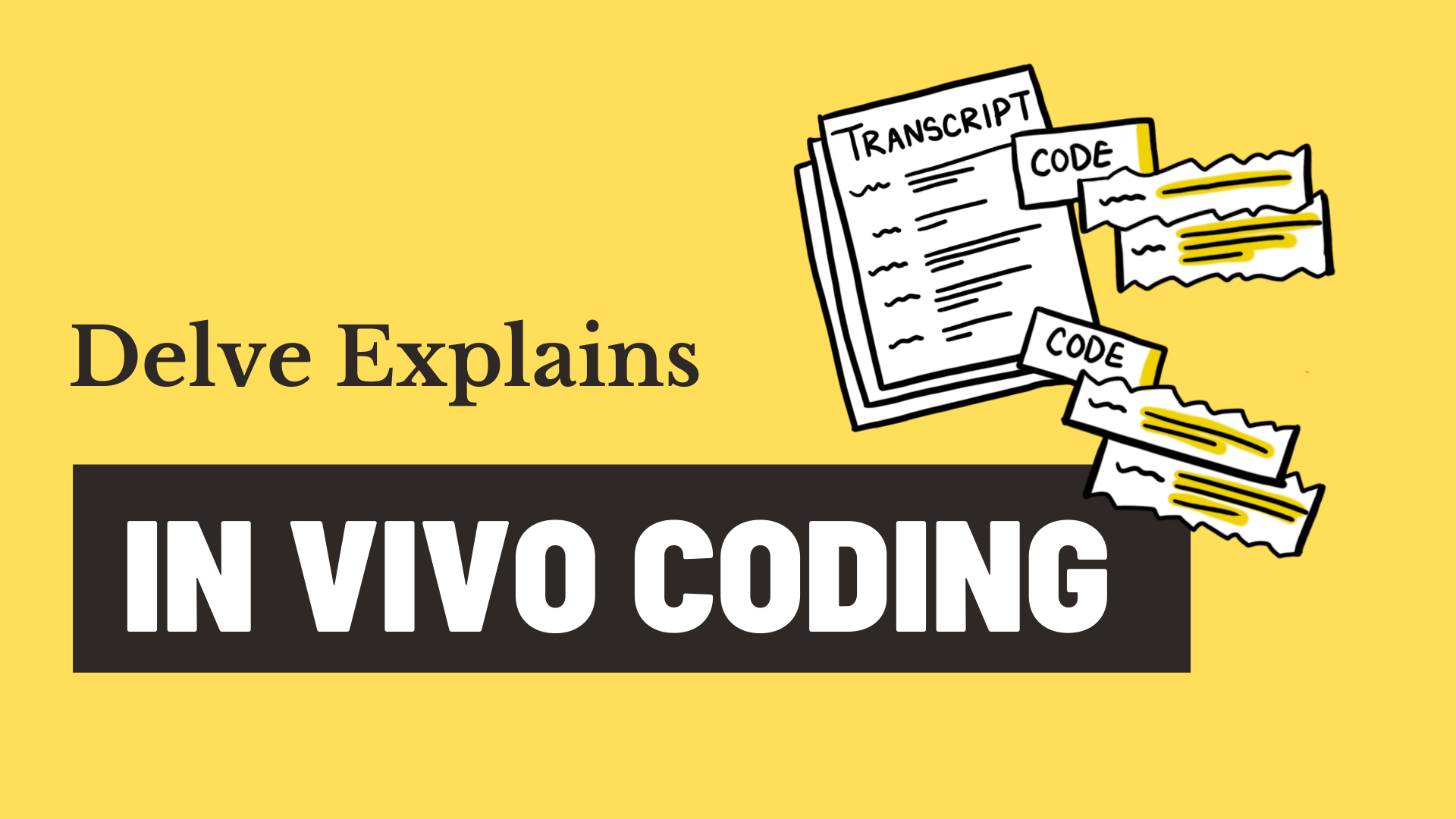How To Do In Vivo Coding
(Also known as Verbatim Coding)
This is part of our Essential Guide to Coding Qualitative Data | Start a Free Trial
What is in vivo coding?
With in vivo coding, a first cycle coding method in qualitative analysis, you derive codes from the data itself. In vivo codes utilize the language and terminology used by the participants rather than alternative methods where codes are researcher-derived. This allows codes to reflect the perspectives and actions of the participants. In vivo coding helps researchers attain an in-depth understanding of the direct stories, ideas and meanings that are expressed by research participants.
In vivo coding also goes by alternative names: verbatim coding, literal coding, and natural coding.
When should I use in vivo coding?
Here is when you should consider using in vivo coding (or verbatim coding).
When using an inductive coding method (grounded style of coding where codes are derived from data).
When you’re capturing an emic perspective (reflecting the perspective of the group being studied)
When utilizing grounded theory
When conducting research on a group of participants that come from a particular culture or subculture where it would be important to utilize their spoken words or phrases
What is the process of doing in vivo coding?
When doing in vivo coding (or verbatim coding), you read through the data and name codes based on words and phrases utilized by the participant.
In Vivo Coding Example
Here’s a transcript excerpt from when we interviewed a researcher about their research analysis process. Parts of the transcript have been edited for brevity.
As you can see, the researcher derives the code names from the literal words in the transcript itself. The codes capture the essence of what the participant was communicating.
In vivo coding is just one out of many ways to code when analyzing qualitative research. To read more about other types of coding, read our Essential Guide to Coding Qualitative Data.
Use In Vivo Coding Software
Software for in vivo coding helps you keep track of codes across a project. A common mistake with in early phases of coding is to create too many codes Newcomers to qualitative analysis may create multiple in vivo codes that are too specific and only apply to one transcript.
Software like Delve allows you to avoid this issue, by making your codes easily accessible across your entire project. The codes are always accessible on any transcript, urging the research to ask if excerpts can be applied to existing in vivo codes. See how meaning can transcend each individual research participant and apply that in vivo code to multiple excerpts.
Nevertheless, even the best researchers can find that they have created too many in vivo codes that are too transcript specific. Researchers may want to combine two codes that overlap in meaning. With tools like pen and paper, this is a cumbersome endeavor. With software like Delve, merging two in-vivo codes is as simple as dragging and dropping.
Software for in vivo coding allows you to fully explore the concepts of your research, without fearing that your data will become unmanageable.
We recommend using Delve qualitative data analysis tool for in vivo coding. It's streamlined, simple and saves time. It’s the #1 ranked Qualitative Data Analysis software. Start a free trial today.
Qualitative analysis doesn't have to be overwhelming
Take Delve's free online course to learn how to find themes and patterns in your qualitative data. Get started here.

Try Delve, in vivo coding software
Online in vivo software such as Delve can help streamline how you’re coding your qualitative coding. Try a free trial or watch a demo of the Delve.
References
Saldana, Johnny (2009). The Coding Manual for Qualitative Researchers. Thousand Oaks, California: Sage.
Cite this blog post:
Delve, Ho, L., & Limpaecher, A. (2020a, August 27). How To Do In Vivo Coding https://delvetool.com/blog/invivocoding

